Andres D. Perez
Shedding Light on Dark Matter at the LHC with Machine Learning
Sep 18, 2025Abstract:We investigate a WIMP dark matter (DM) candidate in the form of a singlino-dominated lightest supersymmetric particle (LSP) within the $Z_3$-symmetric Next-to-Minimal Supersymmetric Standard Model. This framework gives rise to regions of parameter space where DM is obtained via co-annihilation with nearby higgsino-like electroweakinos and DM direct detection~signals are suppressed, the so-called ``blind spots". On the other hand, collider signatures remain promising due to enhanced radiative decay modes of higgsinos into the singlino-dominated LSP and a photon, rather than into leptons or hadrons. This motivates searches for radiatively decaying neutralinos, however, these signals face substantial background challenges, as the decay products are typically soft due to the small mass-splits ($\Delta m$) between the LSP and the higgsino-like coannihilation partners. We apply a data-driven Machine Learning (ML) analysis that improves sensitivity to these subtle signals, offering a powerful complement to traditional search strategies to discover a new physics scenario. Using an LHC integrated luminosity of $100~\mathrm{fb}^{-1}$ at $14~\mathrm{TeV}$, the method achieves a $5\sigma$ discovery reach for higgsino masses up to $225~\mathrm{GeV}$ with $\Delta m\!\lesssim\!12~\mathrm{GeV}$, and a $2\sigma$ exclusion up to $285~\mathrm{GeV}$ with $\Delta m\!\lesssim\!20~\mathrm{GeV}$. These results highlight the power of collider searches to probe DM candidates that remain hidden from current direct detection experiments, and provide a motivation for a search by the LHC collaborations using ML methods.
Machine-Learning Analysis of Radiative Decays to Dark Matter at the LHC
Oct 17, 2024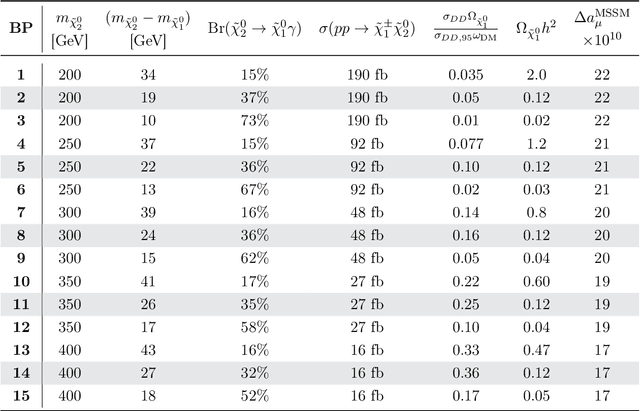

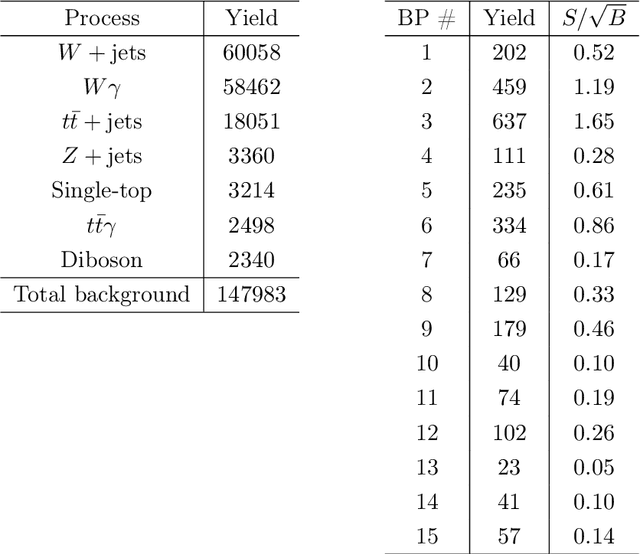
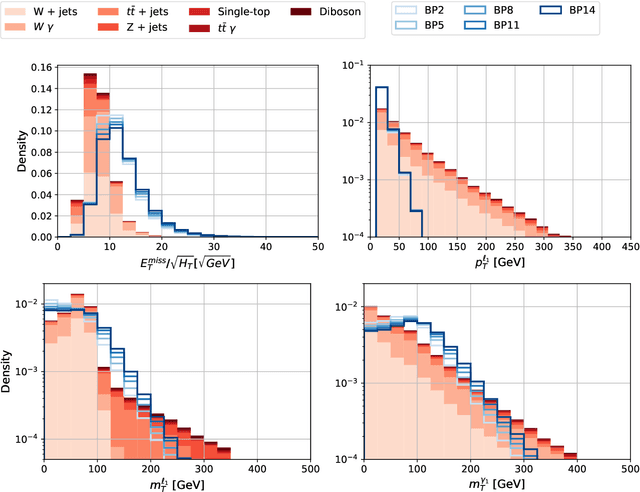
Abstract:The search for weakly interacting matter particles (WIMPs) is one of the main objectives of the High Luminosity Large Hadron Collider (HL-LHC). In this work we use Machine Learning (ML) techniques to explore WIMP radiative decays into a Dark Matter (DM) candidate in a supersymmetric framework. The minimal supersymmetric WIMP sector includes the lightest neutralino that can provide the observed DM relic density through its co-annihilation with the second lightest neutralino and lightest chargino. Moreover, the direct DM detection cross section rates fulfill current experimental bounds and provide discovery targets for the same region of model parameters in which the radiative decay of the second lightest neutralino into a photon and the lightest neutralino is enhanced. This strongly motivates the search for radiatively decaying neutralinos which, however, suffers from strong backgrounds. We investigate the LHC reach in the search for these radiatively decaying particles by means of cut-based and ML methods and estimate its discovery potential in this well-motivated, new physics scenario.
Machine-Learned Exclusion Limits without Binning
Nov 09, 2022Abstract:Machine-Learned Likelihoods (MLL) is a method that, by combining modern machine-learning classification techniques with likelihood-based inference tests, allows to estimate the experimental sensitivity of high-dimensional data sets. We extend the MLL method by including the exclusion hypothesis tests and show that the addition of Kernel Density Estimators avoids the need to bin the classifier output in order to extract the resulting one-dimensional signal and background probability density functions. We first test our method on toy models generated with multivariate Gaussian distributions, where the true probability distribution functions are known. We then apply it to a case of interest in the search for new physics at the HL-LHC, in which a $Z^\prime$ boson decays into lepton pairs, comparing the performance of our method for estimating 95\% CL exclusion limits to the results obtained applying a binned likelihood to the machine-learning classifier output.
Towards a method to anticipate dark matter signals with deep learning at the LHC
May 25, 2021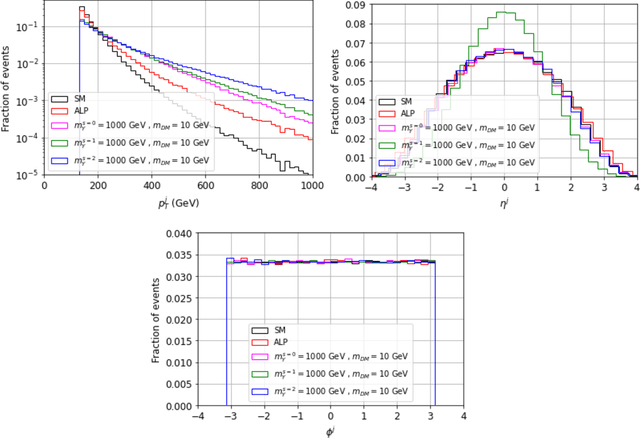
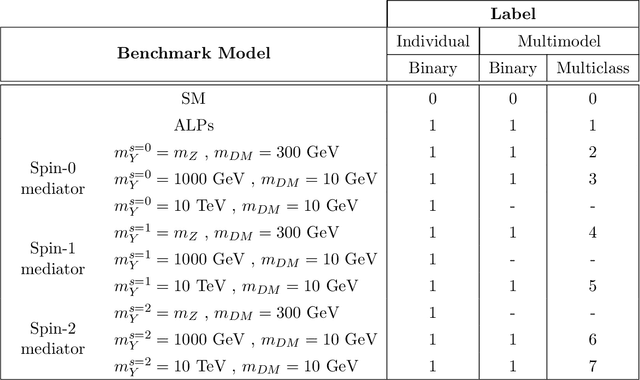
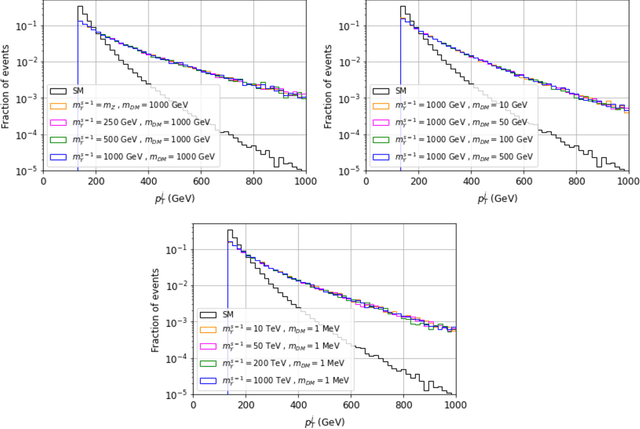
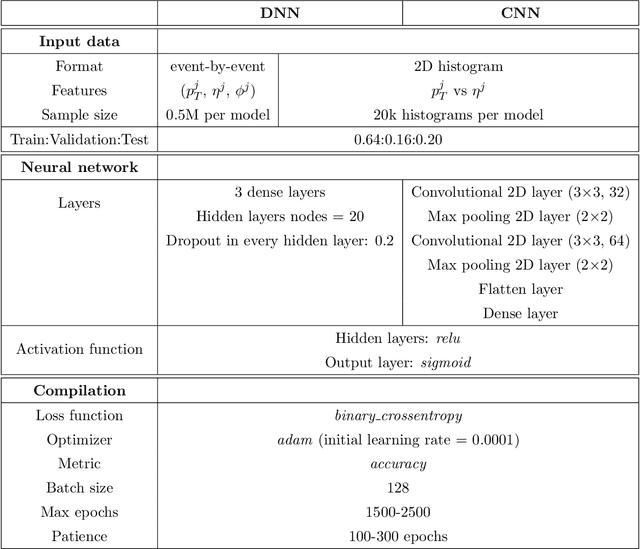
Abstract:We study several simplified dark matter (DM) models and their signatures at the LHC using neural networks. We focus on the usual monojet plus missing transverse energy channel, but to train the algorithms we organize the data in 2D histograms instead of event-by-event arrays. This results in a large performance boost to distinguish between standard model (SM) only and SM plus new physics signals. We use the kinematic monojet features as input data which allow us to describe families of models with a single data sample. We found that the neural network performance does not depend on the simulated number of background events if they are presented as a function of $S/\sqrt{B}$, where $S$ and $B$ are the number of signal and background events per histogram, respectively. This provides flexibility to the method, since testing a particular model in that case only requires knowing the new physics monojet cross section. Furthermore, we also discuss the network performance under incorrect assumptions about the true DM nature. Finally, we propose multimodel classifiers to search and identify new signals in a more general way, for the next LHC run.
 Add to Chrome
Add to Chrome Add to Firefox
Add to Firefox Add to Edge
Add to Edge